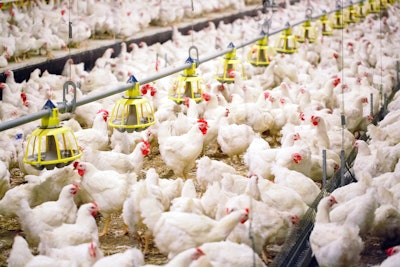
Loop-mediated isothermal amplification (LAMP) could overcome some of the current challenges of diagnosing highly pathogenic avian influenza (HPAI) in commercial poultry, resulting in faster detection.
“If you want an accurate test, you do sample collection at the farm, but then you’ve currently got a 24 or 48 hour turnaround and HPAI moves very quickly,” explained Erik Tyrrell-Knott, chief business and strategy officer, Alveo Technologies.
The poultry industry currently faces challenges in diagnosing HPAI in a timely manner due to a lack of accurate, rapid testing at farms. Confirmation of HPAI traditionally requires poultry facilities send samples to central or nationally approved laboratories, which delays decision-making at the farm level and increases the risk of disease spread.
How it works
LAMP is a nucleic acid amplification method used in molecular diagnostics to detect potential pathogens.
The technology amplifies DNA like a polymerase chain reaction (PCR) test. However, LAMP is less expensive to run than PCR. In addition, LAMP testing is carried out at a constant temperature, as opposed to PCR, which requires a series of alternative temperature steps or cycles.
Lab-on-a-chip technology that uses the LAMP method can function as a portable analyzer to detect diseases, like HPAI, on the poultry farm. The addition of impedance – or electrical signals – during the LAMP process results in an analyzer that is durable, which can be important in variable environments like poultry houses.
“It’s technology that’s convenient and that can be done by a veterinarian or lay person and results can be returned quickly,” Tyrell-Knot said.
To learn more about HPAI cases in commercial poultry flocks in the United States, Mexico and Canada, see an interactive map on WATTPoultry.com.
View our continuing coverage of the global avian influenza situation.


















